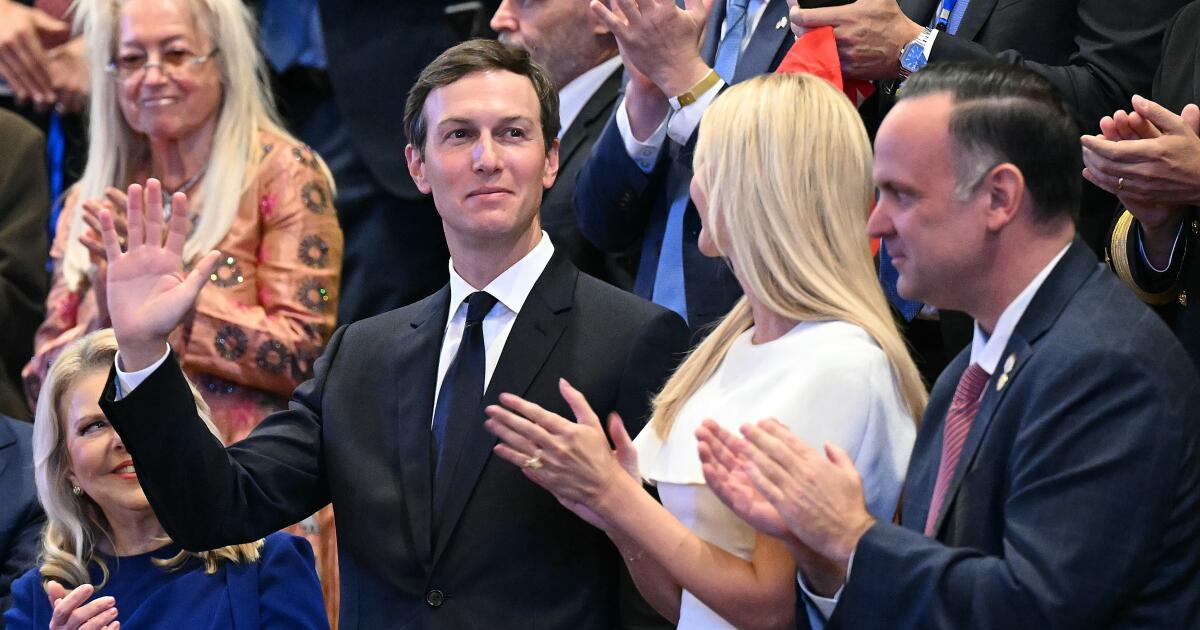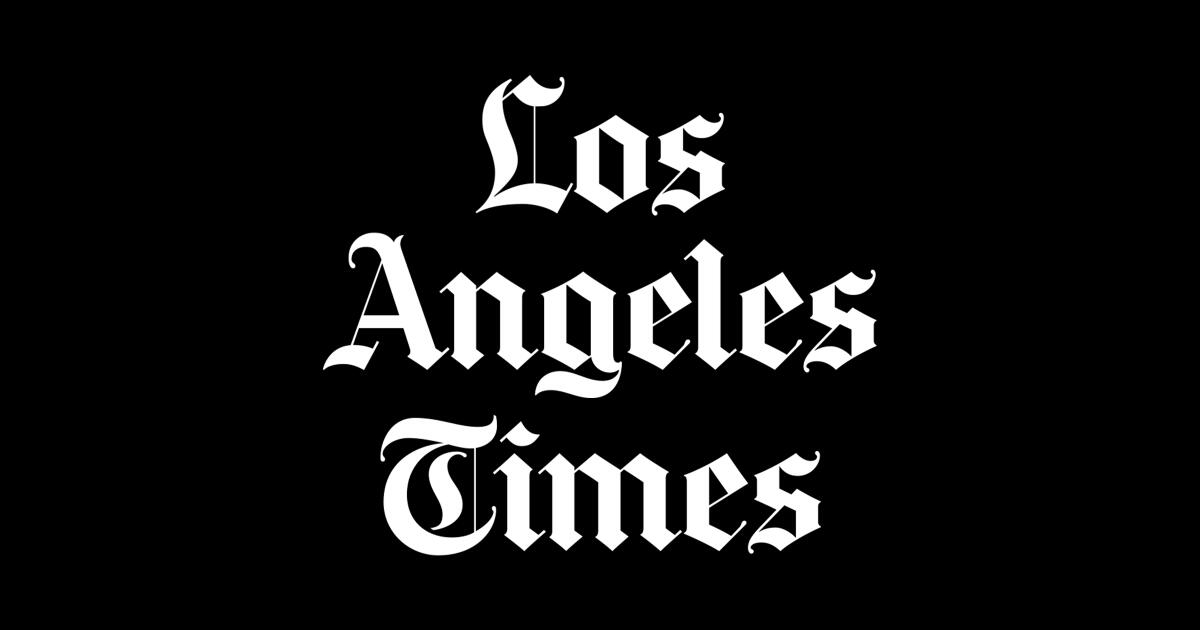DETROIT — In the frantic final firefight of the 1992 presidential campaign, this battered industrial city may have been ground zero.
In the last days before today’s vote, President Bush and Bill Clinton crossed paths over and over again through a narrow band of critical Rust Belt and Great Lakes states–from New Jersey and Pennsylvania to Ohio and Wisconsin. But no state occupied more of their attention than Michigan.
Into this battlefield, the two major contenders have fired television and radio ads, mailings, surrogate speakers and repeated visits of their own–to the point where even veteran local observers have been overwhelmed. Their efforts–reinforced by Ross Perot’s national television barrage–have put the campaign on everyone’s lips.
“There’s a lot of strong feelings on it this year,” said LeAnn Kirrmann, a Republican activist from Grand Ledge, as she waited for Bush to arrive at a rally near here Sunday.
That appears to be the case across the nation, as voters render their verdict on this stormy, vituperative and often path-breaking campaign. Polls show the percentage of voters paying close attention to the campaign has soared this fall, and most experts expect a large turnout–a dramatic conclusion to a campaign that has regularly produced moments of high drama.
“It’s a mortal lock that turnout is going up,” said GOP pollster Bill McInturff.
After tightening significantly last week, national polls show Clinton again holding a comfortable lead over Bush, with Perot lagging behind. Few observers are entirely certain that a campaign that has been consistently unpredictable doesn’t hold one or two more surprises. But a Bush comeback at this stage would rank as the most dramatic reversal of fortune in the final hours of a presidential race.
In their final maneuvering, both Bush and Clinton targeted this state for contrasting reasons that underscore the length of the odds facing the President.
The widespread economic uneasiness in Michigan–symbolized by the continuing turmoil of General Motors Corp., which led to a management shake-up Monday–has always made the state an uphill climb for Bush despite its Republican leanings in recent presidential campaigns.
It remains a daunting challenge for the President now: The latest statewide tracking poll for a Detroit TV station, released Monday night, showed Clinton leading with 46%, Bush with 30% and Ross Perot at 16%.
Facing such numbers, Bush might have written off Michigan in a different year to spend his last campaign hours elsewhere. But the President has been forced to pound relentlessly at the state because there appears to be no way he can win the necessary 270 electoral votes without Michigan’s 18.
That reality defines Clinton’s stake in the state. Although Clinton–with his strong base on both coasts–can probably win today without carrying Michigan, he has invested so heavily here precisely because he knows Bush cannot.
“That’s Clinton’s great advantage,” said Democratic strategist Tad Devine. “He can focus on trying to take just one link out of Bush’s chain.”
Clinton’s intense focus on Michigan represents the reversal of a traditional Republican tactic. Because the GOP base in the South and West left Democrats so little room to maneuver in past presidential campaigns, Republicans have typically been able to dictate the battlefield in the election’s final hours.
In past years, the Republicans devoted enormous resources to a single conservative-leaning state–usually Ohio–confident that if they won there, the Democrats could not reach an Electoral College majority.
This year, though, it is Clinton who has the lead and the flexibility to choose where to fight. He has selected Michigan as his version of Ohio.
“That is a pretty fair analogy,” said David Wilhelm, Clinton’s campaign manager. “Michigan is a linchpin to our Electoral College strategy; it is a state that if we win, it destroys almost any chance that Bush will be reelected.”
With the state playing such a central role in the strategies of both candidates, their efforts here have been enormous. “Some of us,” said Don Tucker, the Democratic chairman in populous Oakland County, “have started to think Clinton and Bush are running for President of Michigan.”
When Clinton arrived in Detroit on Monday for a lunchtime airport rally, it marked his third visit to the area in five days and his sixth trip to the state in two weeks.
On Sunday, Bush roused the faithful with a scathing attack on Clinton at a rally in Auburn Hills, just north of here–his third run at the state in eight days.
Last Thursday, voters from around the state were able to ask Bush questions in a televised town meeting from Grand Rapids. The next night Clinton flew to the Detroit suburbs to hold his own televised town meeting.
When Clinton forces made their final buy of television time last week, they estimated they were placing enough commercials on the air so that each Michigan resident would see them 14 times through Election Day.
Bush, both sides figure, is on the air even more heavily–especially with a foreboding spot about Clinton’s record as governor that might be titled “Apocalypse Arkansas.” From both sides, acerbic radio advertisements blare incessantly.
As for Perot, local observers say his ad assault has been less visible than in some other states. But his promises to shake up Washington have won him a strong following.
At one point early last week, Republican polls showed Perot surging over 20% in this state. With most of Perot’s gains coming from Clinton, that tightened the Michigan race considerably.
But, as has happened throughout the country, Perot’s support has slipped here since he accused the White House last week of engineering dirty tricks that forced his withdrawal from the race in July. Initially, the voters deserting Perot disproportionately moved to Bush, but now Clinton is winning his share of those voters and consolidating his lead.
“The President is unlikely to close the gap in Michigan on Election Day,” said GOP pollster Steve Lombardo.
Even with Clinton’s lead in the polls, Democrats here remain edgy. Almost without exception, they are haunted by the memory of 1990, when then-Gov. James J. Blanchard led Republican John Engler by 10 percentage points in the final polls–and then was swept from office by a strong Republican effort to get out their vote, coupled with a poor turnout in Detroit.
Democrats are insistent that won’t happen again. Registration is up in Detroit, and Mayor Coleman A. Young has put his shoulder into the Clinton effort. One local official estimated this weekend that 65% of registered Detroit voters could come to the polls today, compared to just 54% four years ago.
Unions are pushing hard too: The UAW has been distributing to members copies of a Flint newspaper article reporting that Ross Perot owns a Mercedes-Benz and other foreign cars. In Michigan, that’s not much different than burning a flag.
Republican efforts to turn out the vote are just as intense. In Oakland County alone, GOP volunteers made more than 150,000 calls last weekend, said Jim Alexander, the county GOP chairman.
Local observers say religious conservatives and anti-abortion activists are mounting powerful drives; thousands of copies of the Christian Coalition’s voter guide on the presidential candidates were distributed at Bush’s rally in Auburn Hills on Sunday.
Beyond its impact on the Electoral College, voting in Michigan should help answer some of the key questions on which the results will pivot around the nation. Among them:
* Can Clinton reclaim the so-called Reagan Democrats–the blue-collar ethnics who deserted the party during the 1970s and 1980s over taxes, the economy and the perception that Democrats favored minorities?
Stressing such issues as welfare reform and his support for the death penalty, Clinton has aggressively courted voters in Macomb County, a Detroit suburb renowned as the breeding ground of Reagan Democrats.
Republicans have fired back with targeted mailers hitting Clinton on trust and taxes. And Perot could be a formidable competitor in Macomb County and similar neighborhoods for the votes of working-class residents disgusted with Bush and the gridlock in Washington.
* Can Bush hold suburban Republicans and independents who favor abortion rights? Four years ago, he carried the generally affluent Detroit suburb of Oakland County by 109,000 votes. But the hard-right line on social issues at the Republican Convention did not play well there, and Democrats are optimistic that Clinton’s centrist message will allow him to make significant inroads, not only in Oakland County but in similar places in New Jersey, Illinois and Pennsylvania.
* Can Clinton get the high turnout he needs from blacks after a campaign so heavily focused on wooing white swing voters in the suburbs? The answer will affect the result not only here but in other industrial states, such as Ohio and Pennsylvania, as well as Southern battlegrounds like Georgia and Louisiana.
* Will young voters show up today? One reason Clinton’s margin diminished in some national surveys last week is those polls included very few young people among their likely voters–and Clinton, the first baby boomer to top a national ticket, has been running very well with the young.
In 1988, just 36% of eligible voters age 18 to 24 actually turned out. Mike Dolan, field director for Rock the Vote, a nonpartisan national effort to register and turn out young voters, predicts as many as half of them may vote this year.
Such a spike in turnout would be a huge boost for Clinton; in this state, for example, he has courted students at rallies at both the University of Michigan and Michigan State University.
One cloud on the Democratic horizon is the possibility of rain today in Michigan and much of the Midwest. Conventional wisdom holds that rain could dampen turnout in Detroit and other urban centers and pinch Clinton’s vote.
But many on both sides believe that interest in this campaign is so high that even rain won’t cool it off. “With all of the attention to the race this year,” Alexander said, “I don’t know if even rain is going to matter.”




